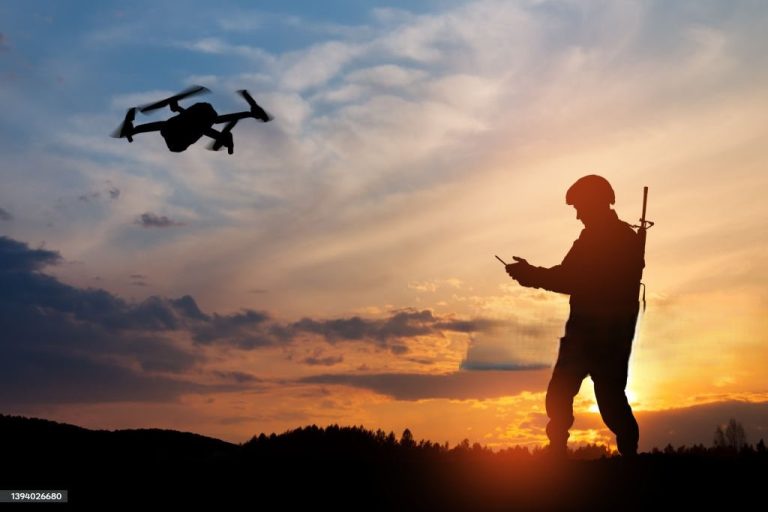Cross-border tensions between India and Pakistan are not new, but recent events have elevated concerns to a whole new level. Over the past few weeks, Pakistan Army shoots down series of Indian drones violating Airspace — and subsequently being shot down. These actions have sparked debate not just within South Asia, but globally, as the specter of drone warfare raises concerns about regional stability and security.
Historical Context of Cross-Border Indian Drones Violating Airspace
Past Incidents of Drone Intrusions
Pakistan and India have had a long history of border skirmishes and espionage. Drone intrusions, however, have become more prominent in the past decade. While earlier attempts involved low-end surveillance drones, the recent incidents have featured more sophisticated models.
How Surveillance Has Evolved Over the Years
With rapid technological advancements, military surveillance has transitioned from spy satellites to drones that offer real-time footage. These drones are capable of penetrating deep into foreign territory, making them ideal tools for tactical surveillance and intelligence gathering.
Recent Developments in Drone Downing by Pakistan Army
Frequency and Locations of Drone Incidents
The Pakistan Army has confirmed that several drones were brought down in strategic areas including Sialkot, Narowal, and Kashmir sectors. These regions are close to the Line of Control (LoC), making them hotspots for cross-border surveillance.
Types of Drones Being Shot Down
Reports suggest that many of the drones downed were commercially modified or military-grade quadcopters. These aren’t just toy drones — they come equipped with high-definition cameras and, in some cases, payload capabilities.
Timeline of Recent Events
In the past month alone, there have been at least five confirmed drone downings by the Pakistan Army. Each incident was swiftly responded to by ground forces using both kinetic weapons and electronic jammers.
How Pakistan Army Detects and Downs Indian Drones
Radar and Surveillance Technology
Pakistan Army shoots down series of Indian drones violating airspace. Pakistan has ramped up its border surveillance using advanced radar systems capable of detecting even small drone signatures. These radars provide early warning and tracking capabilities.
Jammer Systems and Electronic Warfare Units
Electronic warfare has become a key part of Pakistan’s defense strategy. Jammer systems can effectively disrupt the communication link between a drone and its controller, leading to forced landings or crashes.
Role of Ground Troops and Air Defense Units
Once a drone is detected, Pakistan deploys specialized troops trained in drone interception. These units work closely with air defense systems to bring down the UAVs using small arms or anti-drone rifles.
Strategic and Military Implications
Strengthening Border Security
The repeated drone intrusions have pushed Pakistan to further strengthen its border security. New outposts, surveillance centers, and quick-reaction teams are being established.
Intelligence Gathering and Threat Perception
These drones could be a means of gathering data on troop movements, military installations, or civilian infrastructure. This raises alarms about potential preparatory steps for more aggressive actions.
Retaliatory Capabilities and Readiness
Pakistan’s response has demonstrated not only its defensive capability but also its readiness to retaliate if required. The army’s precision in handling these threats has bolstered confidence in its operational preparedness.
Political Reactions from Both Sides
Statements from Pakistan Military Officials
Pakistan’s Inter-Services Public Relations (ISPR) has regularly updated the public, condemning India’s actions as blatant violations of sovereignty and acts of provocation.
Indian Government’s Response
The Indian side has mostly remained silent or dismissed the allegations as exaggerated. However, sources suggest that these drones may have been operated by independent units or paramilitary forces.
Impact on Diplomatic Channels
Such incidents strain already fragile diplomatic ties. Talks that were previously initiated to ease tensions have been paused, with each side blaming the other for escalating the situation.
International Reactions and Media Coverage
Global Concern Over Escalation
Countries like China, the US, and members of the UN have shown concern over these developments, urging both nations to de-escalate and maintain dialogue.
Media Narratives in Pakistan vs. India
While Pakistani media highlights these downings as victories, Indian media either downplays them or presents them as necessary surveillance. This difference in narrative further widens the perception gap.
Role of Global Watchdogs
International human rights and defense organizations have warned that drone warfare near civilian zones can have devastating consequences, urging the UN to step in with preventive frameworks.
Legal Aspects of Indian drones Airspace Violations
International Law on Sovereign Airspace
Violating another nation’s airspace is a serious offense under international law. These drone intrusions qualify as acts of aggression and can justify defensive retaliation.
UN’s Role in Preventing Border Violations
While the UN has mechanisms in place, their enforcement in South Asia remains weak. Pakistan is reportedly preparing to raise this issue at the UN Security Council.


